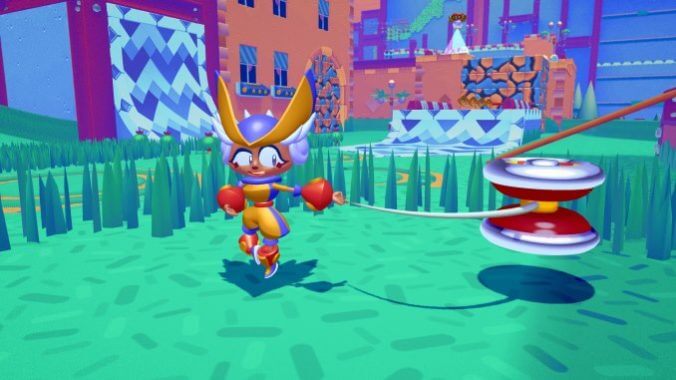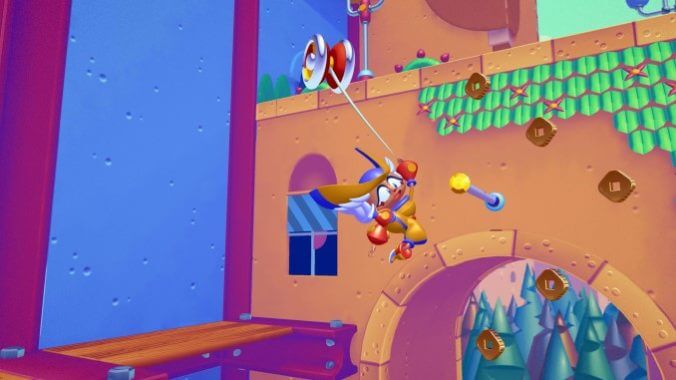Penny’s Big Breakaway Is an Old-Fashioned Delight

With its momentum-based movement and Sega Genesis color palette, Penny’s Big Breakaway proudly wears its influences on its sleeves. Rich in charm and cleverly designed levels, perfect for zipping through quickly enough to make even Sonic The Hedgehog dizzy, this homage to a bygone era of platforming only trips in its dedication to feeling like an old game. But if you look past its nostalgic inconveniences, you’ll find a short-but-sweet 3D platformer with clever platforming design and high replay value in equal measure.
You play as Penny, a yo-yo-wielding street performer whose dog-like sentient yo-yo embarrasses the wrong person and puts a target on their backs, sending Penny on her big breakaway. This yo-yo unlocks handfuls of abilities that aid Penny in her globe-trotting adventure through Macaron. In addition to a short double-jump and swinging from the yo-yo in midair for some extra momentum and distance, Penny can perform a quick dash that lets you build up momentum quickly. She can also ride her yo-yo to take advantage of that built-up momentum to really tear through each level.
Sure, you could take it easy and smell the roses, but these levels are so fine-tuned to zip through at a breakneck pace that it’s hard to resist the urge to bolt to the finish and grind out high scores and good times on each level. But Penny’s Big Breakaway makes sure to reward you for slowing down with loads of side missions and collectibles that each provide their own sense of accomplishment. And with varying types of challenges that put your speed and platforming prowess to the test, I never got bored by taking things easy.
The only times I ever felt unrewarded or annoyed by this game was when its somehow both vague and rigid rules cropped up at the worst times. Just when I felt like I’d mastered something, I found a new place for the same mechanic to fail. And this issue is never more clear than during the boss fights in Penny’s Big Breakaway. At their best, they’re white-knuckle platforming challenges that had me on the edge of my seat, rabidly throwing myself at each boss. At their worst, they hinge on a mechanic that isn’t fleshed out or polished enough to successfully let me do what I’m trying to do.
For example, Penny’s second boss fight has you taking on a pirate captain on their ship, but in order to reach the captain, you need to ride your yo-yo on the water’s surface while dodging incoming attacks. But if you slow down too much, you’ll sink and lose a life. If you slow down too much, Penny starts skipping across the water and you’re supposed to run into a ring that allows you to pick up speed. The catch here is that once Penny starts skipping, you can’t get back to her normal skimming state without executing a tricky jump. Old platformers (especially old 3D platformers) are rife with these kinds of frustrating limitations on what does and doesn’t work. Limited hardware and the untested boundaries of what defines a good 3D platformer were viable excuses decades ago, but time and time again we’ve seen that the best thing a 3D platformer can do is to provide challenge and resistance in its level design, and not its movement.

-

-

-

-

-

-

-

-

-

-

-

-

-

-

-

-

-

-

-

-

-

-

-

-

-

-

-

-

-

-

-

-

-

-

-

-

-

-

-

-








































